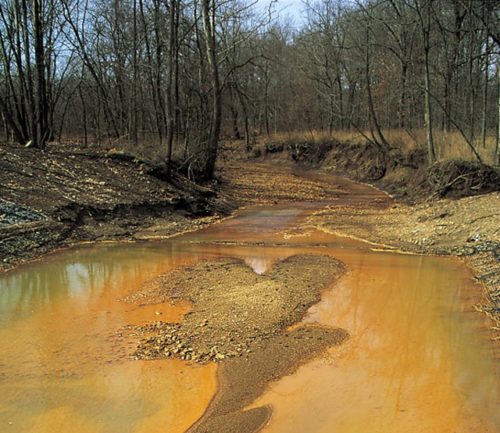With a watering can or irrigate...
During dry periods you have to water your garden. This can be done per plant with a watering can or by irrigating all plants at the same time through the garden.
With a watering can it is best to water the soil around the plants in one go. In fact so much that the watering also reaches the deeper plant roots. On light soils, the water will be absorbed quickly by the soil; this does not apply to heavy clay. The ground quickly closes and puddles form: the soil is impermeable.
To see to what extent the water has sunk into the soil when irrigated with a sprinkler, it is best to put a spa in the ground in a few places in the garden to see where the soil is moist. Use a rain gauge to measure how much has been irrigated and note the ratio between the number of mm irrigated and the number of mm of soil that has become moist. Also useful to know in case of rainfall.
Also when irrigating, it is better to irrigate extensively in one go instead of a little every day. Irrigating a modest amount every day closes the soil (clay!) and produces a higher evaporation compared to a weekly large amount. In addition, the deeper roots are not reached and a more superficial rooting is promoted, so that plants dry out sooner. Loosen the soil after watering; that prevents silting. In addition, loosened soil dries out less quickly.
During drought it is best not to irrigate the entire garden, but to give a large amount of water per plant, once a week. Germinating weeds between the plants do not get a chance to grow. Newly planted shrubs and summer crops naturally need less, but more often, water to prevent them from drying out.
Watering in the evening gives the plants the opportunity to absorb water during the night. However, the moist environment also makes snails active. Watering in the morning prevents this, but shortens the time that the plants can store a surplus of water. In the morning, the plants dry better after watering, which in turn limits the chance of fungi.
Groundwater from the coastal region can have a high salinity. Most plants in the vegetable garden are not salt tolerant.
Groundwater should not be used if it is highly ferrous. Ferrous groundwater oxidizes with oxygen from the air to iron oxide (Fe 3 O 4 ) – rust. Rust is not water soluble and is not absorbed by plants. Rust causes brownish discoloration of crops, pavement, furniture and building walls. Because plants do not absorb rust, it is not a problem for plants. Rust precipitated on leafy crops does not make the vegetables any tastier.
Ferrous groundwater can therefore be used for irrigation (watering), but is unsuitable for misting or spraying. The presence of iron can be determined by smelling or tasting fresh groundwater.

